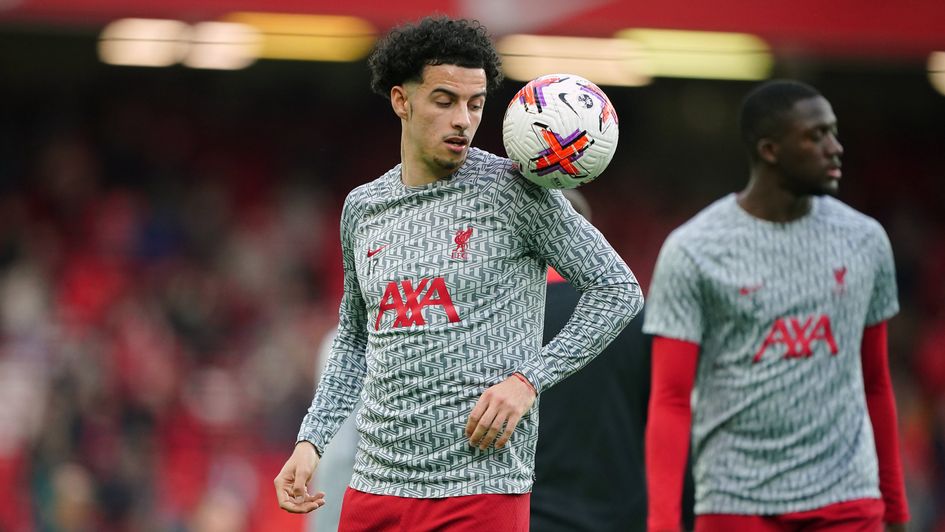Curtis Jones may have changed Liverpool’s summer transfer plans. Sam McGuire looks at what role the midfielder will play going forward.
- Published prior to Monday night's game at Leicester
Curtis Jones may have changed Liverpool’s summer transfer plans.
The 22-year-old has had a difficult 2022/23 campaign with a “freak” injury sidelining him for the majority of the season. The versatile midfielder had a stress response on the bone and a specialist was needed to manage the situation.
Jones started the 1-0 loss to Nottingham Forest in October but had to wait until April for his second Premier League start of the season. He’s kept his place in Jurgen Klopp’s starting XI ever since.
His involvement coincides with Liverpool’s eight-match unbeaten streak. The Reds have taken 20 points from a possible 24 to surge up the table. They now find themselves just one point behind Manchester United in the race for a top-four finish.
Klopp has switched things up over the last month.
Liverpool have adopted the popular 3-2-2-3 shape and this has given a number of players a new lease of life. Trent Alexander-Arnold assisted six times in five matches, Diogo Jota scored five goals over a four-game period while Fabinho looks more like his former self following a dramatic drop-off in form earlier in the year.
Jones has facilitated a lot of this.
The academy graduate starts on the left side of a midfield three but when the Reds morph into their new shape in possession, the No17 almost plays as a left-sided midfielder, allowing the left-sided forward the freedom to push into central areas.
His profile is a fairly unique one.
He was deployed as a left-winger during his formative years and is comfortable in wider areas. However, during the 2020/21 season, Klopp used him as a controller in place of the injured Thiago.
It developed him as a player. He’s safe in possession but also progressive. He’s over 6ft, deceptively quick and is diligently defensively.
Simply put, Jones can play multiple roles at the same time. And he has been.
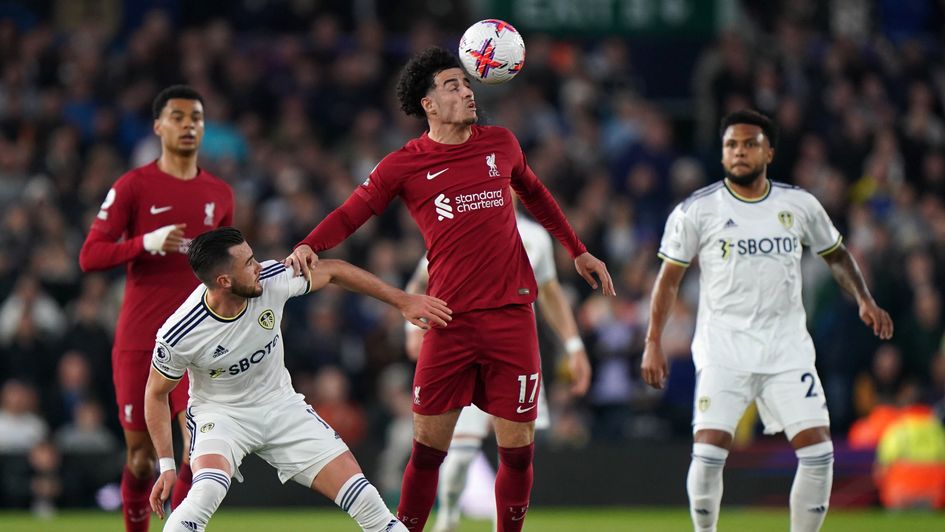
The focus for Liverpool is to get the ball to Alexander-Arnold and Jones plays his part in making this happen. Since coming back into the team, the young midfielder has a pass success rate of 92%.
His lowest was against Arsenal when he found a teammate just 87% of the time.
Jones is often accused of being too passive when in possession but his role is to retain the ball so that the Reds can sustain pressure and work the ball to their No66.
If he’s playing risky passes and turning the ball over, opponents can expose this new system.
Fabinho’s return to form is a result of Klopp giving the Brazilian a smaller part of the pitch to control. Alexander-Arnold partners him in a double pivot when Liverpool have the ball and this has been credited with the former Monaco man improving.
This isn’t the only reason for his resurgence. Jones is the most active midfielder defensively. He’s averaged over nine defensive duels per 90 and in half of these matches, he’s attempted over 10 duels.
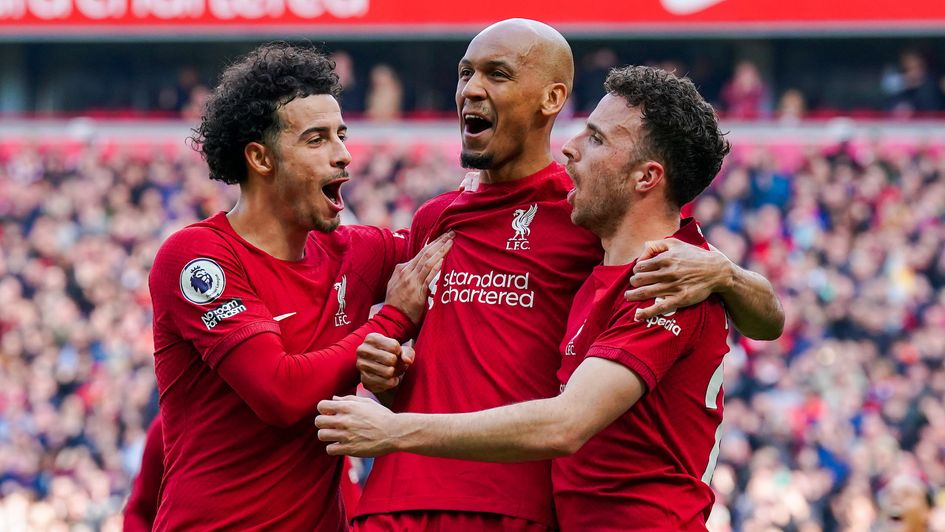
Earlier in the campaign, Klopp criticised his midfield for not involving themselves in duels. It was around this time that Liverpool lost to Brentford, Wolves and Brighton.
Jones is busy out of possession and this helps others. It also helps the Reds as a defensive unit. Across the eight games with the youngster starting in midfield, Liverpool have conceded nine goals from an Expected Goals Against total of 10.49.
In half of the matches, the opposition weren’t able to create chances with an xG value of one.
Furthermore, since the switch, Klopp’s men have an Expected Goals per 90 difference of +1.06. Unlike earlier on in the season, the Reds have been able to dominate the ball and the space.
For a period, Liverpool would have the majority of the ball but weren’t able to limit their opponents due to how exposed their shape was during transitions. It happens occasionally but, in general, things have been much better following the introduction of the 3-2-2-3.
From an attacking perspective, Liverpool look much more fluid going forward. Jones plays his part in that too.
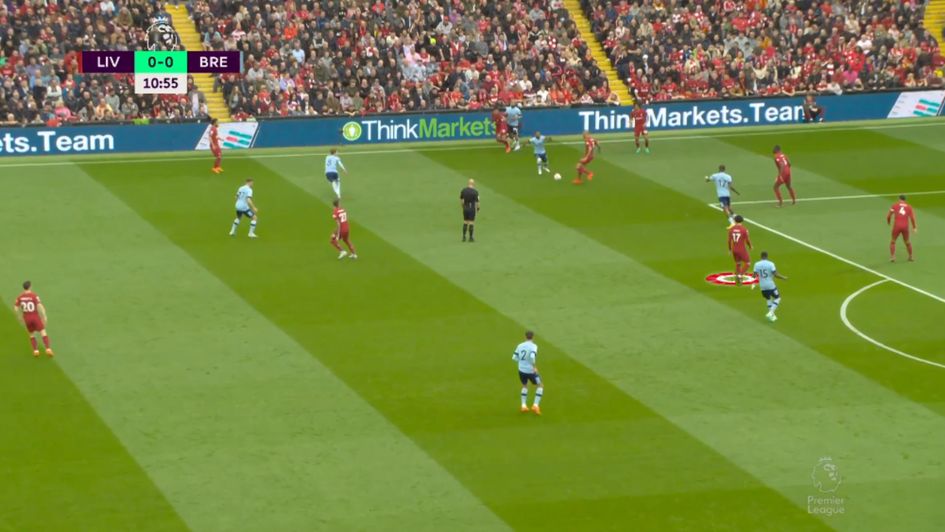
In the still above, Jones is pictured on the edge of his own penalty area as the hosts regain possession against Brentford.
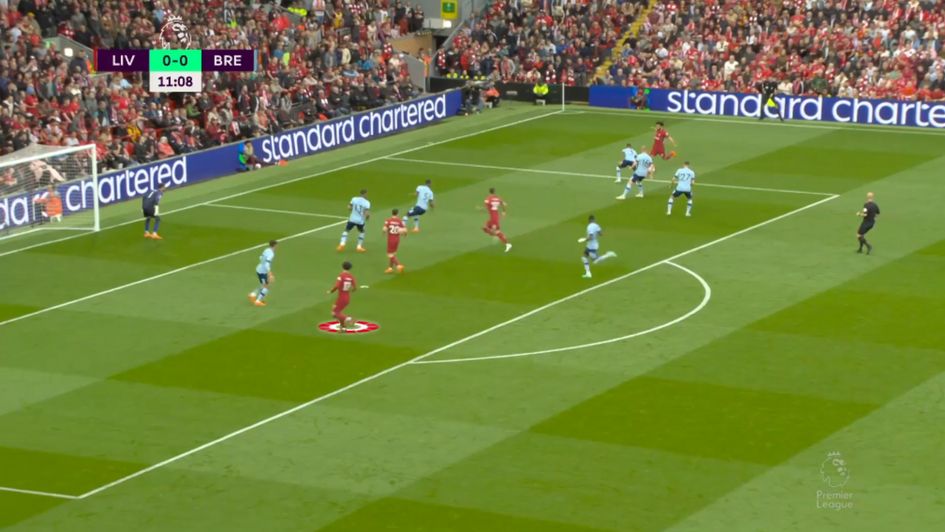
Liverpool break quickly and 13 seconds later Mohamed Salah is putting a cross into the Brentford penalty area. Jones has run from box to box and is occupying Aaron Hickey at the back post to give the Reds a three-versus-three situation.
If Jones doesn’t do that then the visitors have the numerical advantage as that cross comes in and it is much easier to defend.
The No17 tends to attack the outside space and it allows the left-sided forward to take up positions centrally. Jones scored from the back post area against Spurs.
He also played a significant part in Salah’s goal against Arsenal having carried the ball into the box from a wide position. He exploited the space on the left after Jota dropped deep.
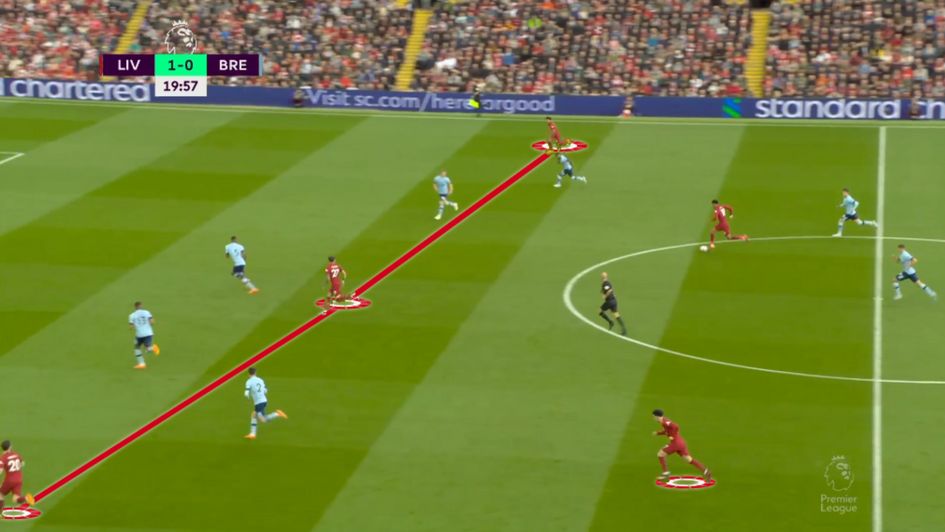
It is all by design.
Initially, the front three stretch play. As soon as the ball gets closer to the opposition’s penalty area, the left-sided attacker cuts inside to support the centre forward and Jones takes up the position on the outside.
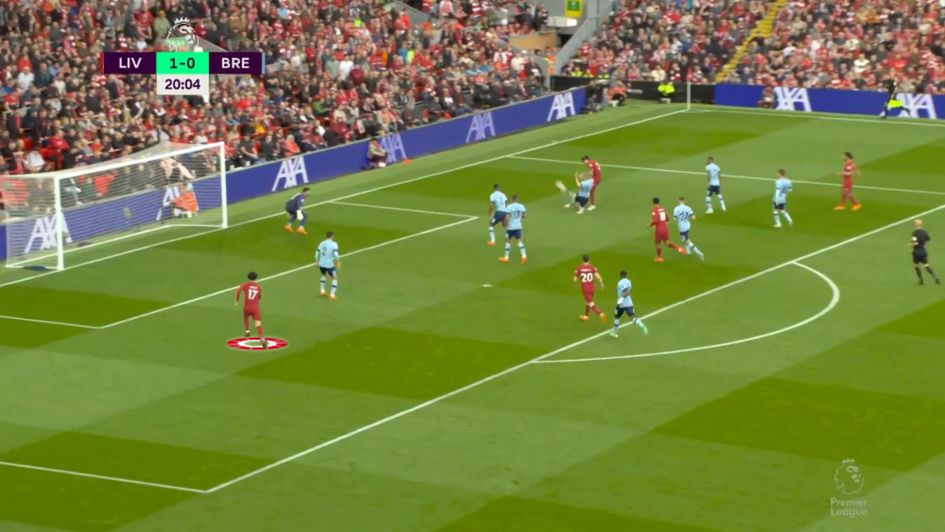
If Darwin Nunez smashes the ball across the goal in this move, it is Jones at the back post waiting to divert the effort past David Raya while Jota attacks the penalty spot.
He is freeing up the likes of Darwin, Jota and Diaz so they are able to get into better positions.
Jones is a facilitator for Alexander-Arnold, he supports Fabinho in the middle third and he’s often a fourth attacker for the Reds.
He’s far from the finished article. He sometimes holds onto the ball a little too long and he could improve his shot selection. But these are things that can be worked on.
If this new shape is something Klopp plans to use long-term Jones has proven himself useful.
The 22-year-old, who signed a new deal at Anfield in November, has made that left-sided midfield role his own over the last month and this could well change what the Reds plan to do in the summer transfer window.






